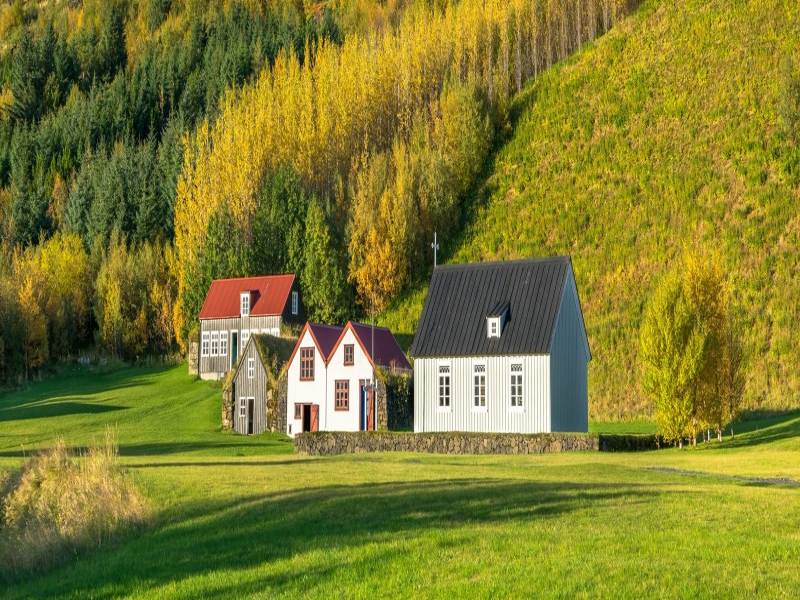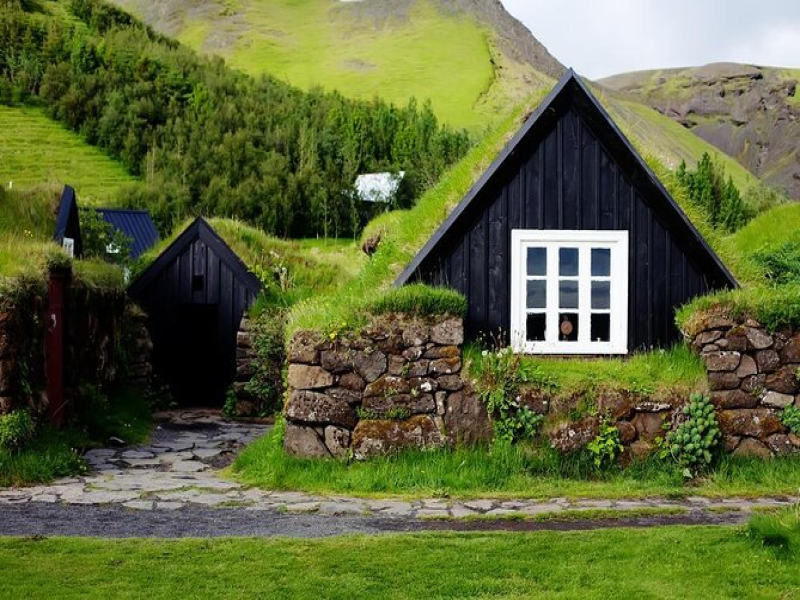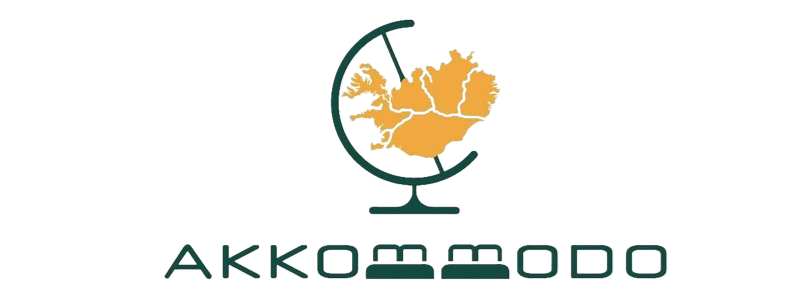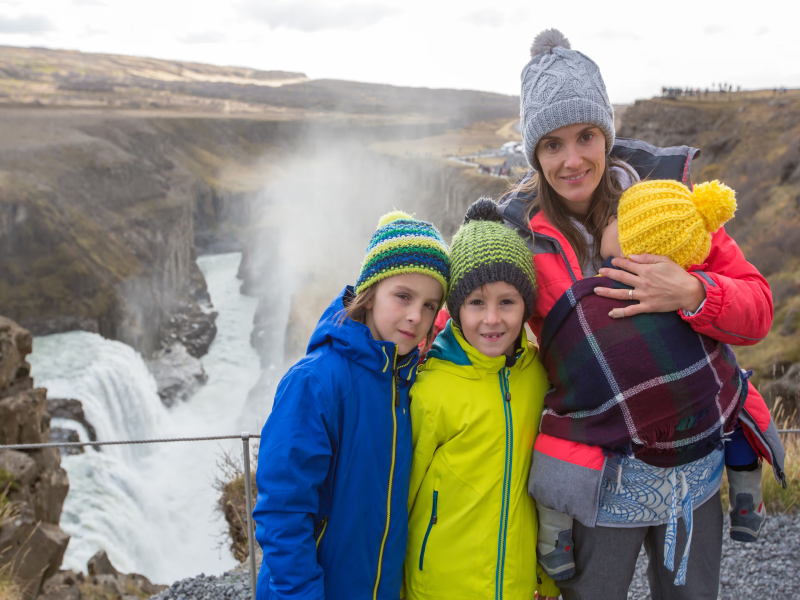Located alongside a picturesque village in Skógar with Skógafoss waterfall behind the centerpiece, the Skógar Folk Museum captures the essence of Iceland’s previous traditions. People in Iceland are portrayed as hardworking and highly adaptable, and the museum gives you a chance to see what life in this country might have been like in the past. Traditional homesteads, tool sheds, fishing boats – learn all about Iceland’s rural history in this country’s Skógar Folk Museum.

Exploring the Skógar Folk Museum
The Skógar Folk Museum is divided into three main sections: the Folk Museum, the Open-Air Museum and the Technical Museum. Still, each section can indeed be seen as presenting different point of view as to the history and development of the Icelandic culture.
The Folk Museum
Step inside the Folk Museum and you will be taken in the chronologically historical era. Here, owners of this museum offer a wealth of items that would provide insight of what the lives of Icelanders in the past entailed. Can you picture a life where people are especially connected with the soil, where they have to struggle daily and have advanced knowledge of some elements in the natural environment?
What can you expect to see?
- Farming tools: Plows scythes and many others even which were necessary to bring out big changes which were necessary while managing the area and sowing as well as reaping crops in the Iceland climate conditions.
- Fishing equipment: Fishing nets, fishing hooks and fishing lines, things upon which Icelanders have relied on for sustenance since time immemorial.
- Household items: Bed frame, kitchenware, and other household items and ornaments, that tell a story of Icelandic families.
- Traditional clothing: Locally designed and creatively knitted clothes produced with wool and other genuine materials as a testimony to the creativity of Icelandic ladies.
The museum has succeeded in presenting these artifacts with explanations of their usage and importance. There, you will discover how Icelanders had to struggle for years and what inventions they came up with to use the resources in their surroundings.
For instance, you would learn how they made good use of the sheep’s skin in fashioning clothes, or its bones in making tools and other utensils. Or you might learn about the significance of dwelling in groups and the customs which tied people together.
The Open-Air Museum
The Open-Air Museum is one of the real attractions of the Skógar Folk Museum. Here you can have a look at number of the reconstructed turf houses and other structures that provide a compelling link to the material culture of the country.
Step back in time:
- Turf houses: Those grassed roofed landmark structures, whose basic concept probably originated in Iceland, were prominently popular. They are an interesting source of knowledge on how Icelandic people managed to use available resources to build strong and at the same time warm houses.
- Farmhouses: Focusing on the structure of the main house and related barns and stables characteristic of traditional Icelandic farmhouses.
- Churches: Find out why early Christian churches in Iceland were made of wood, and have beautifully carved decorations.
- Workshops: Learn how artisans at work – blacksmiths, carpenters, masons, and other craftsmen shaped centuries’ lasting culture.
While touring round these structures, the observer can easily make some assumptions about the lives of the inhabitants of such buildings. One can get a rich impression looking at the Open-Air Museum, I think it exhibits a literal picture of how people used to live a long time ago at utmost independence with paragon hard ship.
The Technical Museum
The visitors of the Technical Museum are given insight of how Iceland transited into the era of modernity. This made it easy to show how Icelandic society and especially in the rural areas was revolutionized by these inventions.
Discover the impact of technology:
- Transportation: In what aspects did it take its course, starting from the horse carriages, moving to the first automobiles?
- Communication: What are the communication technologies that have evolved over time: from the telegraph, through the telephone and radio?
- Industry: On industries find out how fishing and agricultural processes improved and gain knowledge on various implements used to support them.
It is at the Technical Museum where an understanding of how technology affected the lives for the better as well astrogated tradition in Iceland is gained. It is a good example how the society is changing and how the invention affects the deepest corners of the country and world.
Why Visit the Skógar Folk Museum?
Skógar Folk Museum is more than just some old house and items transported to the present day. It is a gateway to the Icelandic spirit; a country that assumes history and maintaining the impressions of the past. Here’s why a visit to this museum should be on every traveler’s itinerary:
What People In Iceland DIDN’T Like About Recent Changes
Iceland is known for many things but its culture being a blend of ancient sagas, early settlement of Scandinavian Monarchies and stories of legends who were cast out for being too independent makes it a place of interesting art and culture. The Skógar Folk Museum can almost be a history lesson in learning about this culture that is completely different to what is learnt in books.
Experience the essence of Iceland:
- Connection to the land: The museum offers clearly the attitudes and relationship of Icelanders with their environment. You will witness the ways in which key features of the landscape influenced Native American’s ability to adapt as well as their philosophies and practices.
- Resourcefulness and resilience: The presented exhibits illustrate the creativity and_IND working of Icelanders during tough times. You will get to know how they dealt with difficulties in the previous societies such as, the volcanic activities, severe frost and you will see how the difficulties helped developed creativity.
- Preservation of traditions: As the article pointed out, the museum has an important task of assisting the country in preserving it for future generations. Thus, it preserve as many elements of Icelandic traditions, crafts, customs and tales that could be forgotten with time.
Skógar Folk Museum can really be described as a kind of an open-air history book. You will learn to embrace the Icelandic people and, indeed, the nation, and their resilience amidst challenges.
A Picturesque Setting
The Skógar Folk Museum was designed with spectacular views, which indeed can be considered impressive. Located in South Iceland, the country is surrounded by some of the most gorgeous natural scenery in the world.
Immerse yourself in nature:
- Skógafoss waterfall: You can get to the stunning Skógafoss waterfall within a 10 min. walk on foot from the museum which tumbles 60 meters down the cliff. This is a pretty amazing view and many tourists love to take pictures here.
- Rolling hills and green pastures: They point out on the fact that museums is located among the hills of green fields which provides serene atmosphere.
- Hiking trails: There are many hiking trails that pass through the surrounding region in order to potentially view the natural surroundings.
Skógar village itself is also interesting as a destination. The rural ambience and the hospitable citizens make the houses more attractive and emphasizing the unique atmosphere of the museum.
A Family-Friendly Experience
Families are sure to enjoy the Skógar Folk Museum. Park is very productive and entertaining destination for tourists of different ages.
Engage and entertain:
- Interactive exhibits: Because of limited resources, the museum has several exhibits that will enable children to be more involved in history.
- Open spaces: We were able to find several open-air indoors spaces for the children to play in and run around.
- Educational opportunities: Activities include special school programs, making learning about history even more exciting for a child.
The accessibility of the museum is also evident; there are facilities for the disabled visitors . It is friendly for people of all kind and everyone can come here and enjoy.

Planning Your Visit to the Skógar Folk Museum
Ready to embark on your journey through Iceland’s rural past? Here’s everything you need to know to plan your visit to the Skógar Folk Museum:
Opening Hours and Admission
The Skógar Folk Museum’s opening hours vary depending on the season.
| Season | Opening Hours |
| Summer (June 1st – August 31st) | 9:00 AM – 6:00 PM |
| Winter (September 1st – May 31st) | 10:00 AM – 4:00 PM |
Admission Fees:
- Adults: 2000 ISK (approximately $15 USD)
- Children (7-17 years): 1000 ISK (approximately $7.50 USD)
- Children under 7: Free
Good to know:
- The museum offers combination tickets that include admission to the Skógar Museum and the nearby Skógar Transport Museum.
- Discounts may be available for seniors, students, and groups.
- It’s always a good idea to check the official website for the most up-to-date information on opening hours and admission fees.
Getting to the Skógar Folk Museum
The Skógar Folk Museum is ideally situated in the village of Skógar on page south west coast of Iceland. You can get it by car and it is one of the primary attractions that people visit by tour companies.
Transportation options:
- By car: The museum is located on Route 1 (the Ring Road), making it a convenient stop on a self-drive tour of Iceland. Free parking is available on site.
- By bus: Several bus companies offer routes that stop in Skógar. This is a great option if you prefer not to drive.
- Guided tours: Many tour operators include the Skógar Folk Museum in their itineraries. This can be a convenient way to visit the museum and learn from an expert guide.
Travel times:
- From Reykjavik: Approximately 2.5 hours by car.
- From Vík í Mýrdal: Approximately 30 minutes by car.
Tips for getting there:
- If you’re driving, be sure to follow the signs for Skógar.
- The roads in Iceland can be challenging in winter, so be prepared for icy conditions.
- If you’re taking the bus, check the schedule in advance to ensure you have enough time to explore the museum.
Tips for Your Visit
To make the most of your visit to the Skógar Folk Museum, here are a few helpful tips:
- Allocate enough time: If one wants to spend quality time in the museum it’s advisable to spend roughly 2-3 hours in the museum.
- Wear comfortable shoes: There will be quite a lot of stairs and walking, especially in the Open-Air Museum so suitable shoes are required.
- Check the weather: If you’re planning a visit to Iceland, I would advise you to dress for the best and check on the weather before the trip.
- Bring a camera: There’s lots to photograph in and around the museum, so do not forget your camera!
- Enjoy the café: Now and then there is a café where you can make yourself some tea or coffee and just relax after an extended period of viewing, walking or reading.
With the help of these recommendations, you are guaranteed to receive a great and valuable holiday at the Skógar Folk Museum.
Skógar Folk Museum: Preserving Iceland’s Rural Heritage for Future Generations
Skógar Folk Museum is a very strong symbol of the whole history of Iceland and its people. Through careful collection, conservation, and interpretation of tangible and intangible history, the museum makes it possible for younger generations to identify with their fore fathers and the circumstances that molded their country.
More than just a museum:
- A cultural treasure: The museum is beneficial to researchers, students and anyone who would want to know more about Icelandic history and culture.
- A community hub: The museum is involved with the needs of the community and continuously holds events and aims at educating visitors.
- A symbol of pride: The Skógar Folk Museum is beloved by Icelanders as the museum proves Icelanders are smart, resourceful people who understand and appreciate the value of their country.
A call to action:
Skógar Folk Museum is one place that I believe every visitor to Iceland should consider to visit. It is a rather valuable opportunity which will provide you with better understanding of Iceland culture and historical past.
Share your experiences:
Did you happen to tour the Skógar Folk Museum? We would also like to know more about your experience. Feel free to write your comments here and don’t forget to share the photos of yours too.

Conclusion
The outdoor exhibition of the Skógar Folk Museum shows how the Icelandic farming culture and the people as a whole are rooted in their history. By means of artifacts, architecture, and qualitative narratives, the museum presents the audience with a rich experience of historical practices or figures that influenced the formation of the nation.
No matter if you are a history lover, culture vulture, or a simple tourist a visit to this incredible place gives you a new valuable lesson about history and endless strength of Iceland’s people. Especially in today’s world where the pace of advancement of top-notch civilization can obscure the native folklore, the Skógar Folk Museum possesses a marvelous opportunity to recall the primary cultural gemstones and appreciate and guard them.
Visit us today and travel with fellow history enthusiasts through some of the remotest regions of Iceland.
References
- Official website of the Skógar Folk Museum: skogasafn.is
- Guide to Iceland: guidetoiceland.is
- Travel Reykjavik: travelreykjavik.com
- Icelandic Times: icelandictimes.com




